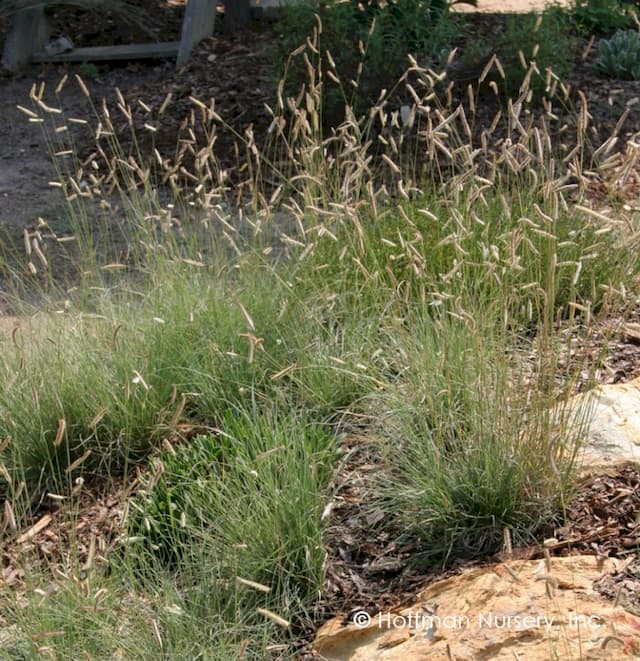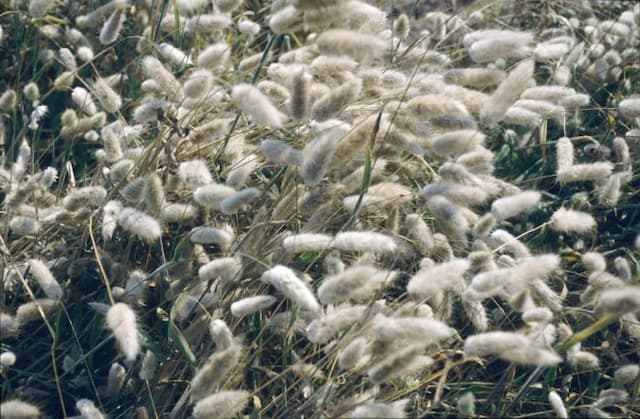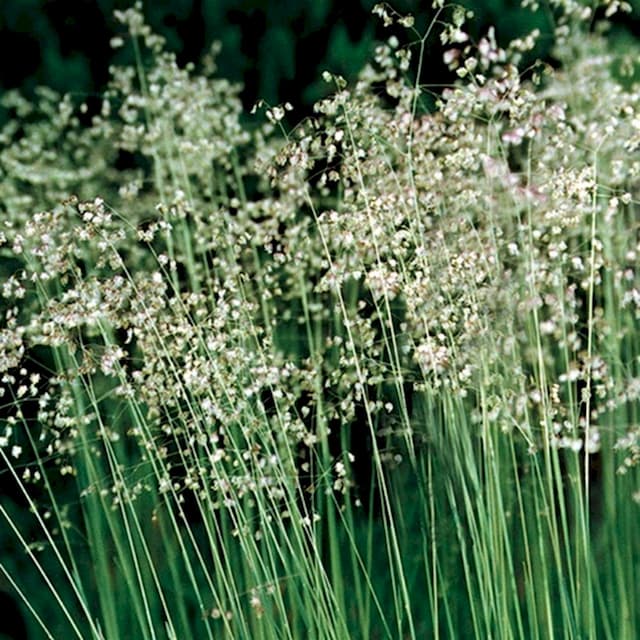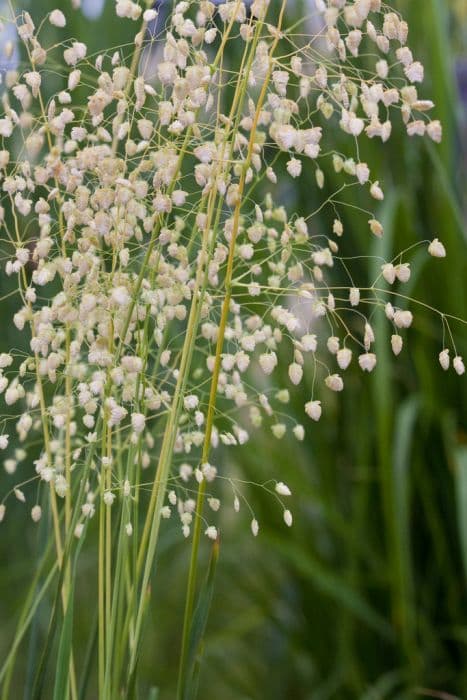Common Bentgrass Agrostis capillaris

ABOUT
Commonly known as Colonial bentgrass, Agrostis capillaris presents a delicate and fine-textured appearance. This perennial grass typically forms dense tufts of slender, wiry blades that are a vibrant green in color. The leaves are narrow, flat, or sometimes folded, giving the plant a soft, hair-like look, which is the basis for its species name, as 'capillaris' suggests hair-like strands. Colonial bentgrass blooms with feathery flowerheads, which are made up of numerous tiny flowers that appear in open, branched structures that can give the plant a wispy, cloud-like silhouette. These flowerheads often take on a purplish or silvery hue. The flowering part of the plant, along with the slender leaves, often creates a gentle, swaying effect in the breeze.
About this plant
 Names
NamesFamily
Poaceae
Synonyms
Brown Top, Colonial Bent, Colonial Bentgrass, Browntop, Velvet Bent, Velvet Bentgrass
Common names
Agrostis vulgaris, Agrostis tenuis, Agrostis capillaris subsp. capillaris, Agrostis capillaris var. capillaris, Agrostis alba, Agrostis alba var. capillaris, Agrostis alba var. vulgaris, Agrostis capillaris var. aristata, Agrostis capillaris var. breviligulata.
 Toxicity
ToxicityTo humans
Commonly known as colonial bentgrass, Agrostis capillaris is not typically recognized as a poisonous plant to humans. There is no significant evidence suggesting that it has toxic properties that would lead to poisoning upon ingestion. Consequently, there are no specific symptoms of poisoning associated with this species. However, it is always prudent to be cautious when dealing with any plant material, as individual allergies or sensitivities can lead to adverse reactions.
To pets
Colonial bentgrass, Agrostis capillaris, is not generally known to be toxic to pets. There is no widely acknowledged information that establishes the ingestion of this plant as being harmful to animals, such as dogs and cats. Therefore, no specific symptoms of poisoning are documented for pets concerning colonial bentgrass. Similar to humans, individual animals could have allergies or sensitivities to plants that might result in mild gastrointestinal upset or other non-specific symptoms, but this does not indicate a general toxicity for this plant species.
 Characteristics
CharacteristicsLife cycle
Perennials
Foliage type
Deciduous
Color of leaves
Green
Flower color
Varies
Height
2 feet (60 cm)
Spread
1 foot (30 cm)
Plant type
Herb
Hardiness zones
Varies
Native area
Europe
Benefits
 General Benefits
General Benefits- Erosion control: Agrostis capillaris, commonly known as Colonial bentgrass, has dense and fibrous roots that help stabilize soil and prevent erosion.
- Lawn and turf grass: It is widely used for lawns, parks, and golf courses due to its fine texture and tolerance to close mowing.
- Aesthetic appeal: Colonial bentgrass offers a pleasant green color and even texture that enhance the visual appeal of landscapes.
- Graze for livestock: Its foliage can serve as forage for animals, particularly sheep and cattle in temperate climates.
- Soil improvement: It can improve soil structure and quality over time through its root system and decaying plant matter.
- Recreational sports surface: Colonial bentgrass provides a smooth surface for sports like golf and is often used on putting greens for its durability and texture.
- Habitat for wildlife: The plant can offer habitat and food for various insects and small wildlife species within its native or adapted range.
- Drought resistance: Although it prefers moist environments, Agrostis capillaris can survive periods of drought, making it suitable for variable climates.
- Low fertilizer requirement: Colonial bentgrass can often thrive with minimal fertilization, reducing the need for chemical input and maintenance.
 Medical Properties
Medical PropertiesThis plant is not used for medical purposes.
 Air-purifying Qualities
Air-purifying QualitiesThis plant is not specifically known for air purifying qualities.
 Other Uses
Other Uses- Erosion Control: Colonial bentgrass, with its dense mat of roots and rapid growth, is excellent for stabilizing soils on slopes and preventing erosion.
- Ornamental Grass: It is often used in landscaping for its fine-textured foliage and ability to form a dense turf.
- Golf Courses: Colonial bentgrass is highly adaptable for use on golf course fairways and tees, due to its tolerance for close mowing.
- Livestock Feed: In some regions, colonial bentgrass serves as pasture for grazing animals such as sheep and cattle.
- Artisanal Crafting: The fine leaves can be used for creating decorative thatch in miniature models and artistic projects.
- Eco-Friendly Roofing: The grass can be utilized in the construction of green roofs, contributing to urban sustainability.
- Groundwater Protection: Its extensive root system can help in filtering pollutants, aiding in the protection of groundwater resources.
- Bioremediation: Colonial bentgrass can play a role in bioremediation, helping to rehabilitate sites contaminated with certain heavy metals by stabilizing the soil.
- Habitat Creation: By forming dense turf, it provides a habitat for various small invertebrates, which in turn support local biodiversity.
- Turf Wars Educator: Used as a tool in educational programs about invasive species, showcasing how it can outcompete local flora.
Interesting Facts
 Feng Shui
Feng ShuiThe plant Colonial Bentgrass is not used in Feng Shui practice.
 Zodiac Sign Compitability
Zodiac Sign CompitabilityThe plant Colonial Bentgrass is not used in astrology practice.
 Plant Symbolism
Plant Symbolism- Common Bent Grass (Agrostis capillaris): This plant often symbolizes simplicity and humility due to its common occurrence and unassuming appearance. It's often found in meadows and fields, blending in with the natural landscape rather than standing out.
- Adaptability: The ability of Common Bent Grass to grow well in various types of soils and conditions represents adaptability and resilience. It teaches the lesson of thriving in diverse situations.
- Fertility: As a grass that is often seen covering vast areas, it is sometimes associated with fertility and abundance. Its prolific nature signifies life and growth.
- Healing: Historically, some grass species, including relatives of the Common Bent Grass, were believed to have medicinal properties, symbolizing healing and the nurturing aspects of nature.
 Water
WaterColonial bentgrass should be watered deeply and infrequently to encourage a strong root system; aim for about 1 inch of water per week, including rainfall. During hot or dry spells, increase watering to twice per week, ensuring that the soil does not become waterlogged. It's best to water early in the morning to reduce evaporation and prevent fungal diseases. Overhead sprinklers can be used to distribute water evenly across the grass, and it's important to allow the soil to dry out slightly between watering sessions. Depending on the weather conditions, you might need to adjust the amount of water; however, consistently provide adequate moisture to maintain the plant's health.
 Light
LightColonial bentgrass thrives in full sun to partial shade. The ideal spot for this grass is an area that receives at least 4 hours of direct sunlight per day, although it can tolerate some light shade. Avoid planting it in heavily shaded areas, as this can lead to weak growth and increased susceptibility to diseases.
 Temperature
TemperatureColonial bentgrass prefers cool weather and grows best in temperatures between 60°F and 75°F. It can survive minimum temperatures as low as 5°F and maximum temperatures up to 90°F. However, it may go dormant during periods of extreme heat or cold. Maintaining the grass within its ideal temperature range will ensure optimal growth and health.
 Pruning
PruningPruning, or more commonly mowing, of colonial bentgrass is important for maintaining turf density and health. Mow the grass to a height of 1.5 to 2.5 inches, removing no more than one-third of the blade height at a time. Regular mowing during the growing season, typically once a week, will encourage a dense, even grass cover. The best time for pruning is when the grass is dry and in the active growing phase, usually late spring through early autumn.
 Cleaning
CleaningNot needed
 Soil
SoilColonial bentgrass, commonly known as Agrostis capillaris, thrives best in a well-draining, loamy soil mix with a pH between 5.5 and 6.5. A mix of two-thirds loam and one-third sand is ideal, providing proper drainage and nutrient retention.
 Repotting
RepottingColonial bentgrass, being a perennial grass often grown outdoors, does not typically require repotting as it would be for indoor potted plants. It spreads through rhizomes and tillers and is overseeded rather than repotted.
 Humidity & Misting
Humidity & MistingColonial bentgrass prefers moderate humidity environments, aligning with outdoor conditions in temperate climates. Optimal humidity levels would generally be in the range of 40% to 70%.
 Suitable locations
Suitable locationsIndoor
Grow Colonial bentgrass in a bright, cool spot with a loamy soil mix.
Outdoor
Plant Colonial bentgrass in sun to part shade and moist, well-drained soil.
Hardiness zone
3-9 USDA
 Life cycle
Life cycleAgrostis capillaris, commonly known as Common Bentgrass, initiates its life cycle as a seed, which will germinate in optimal conditions of moisture and temperature. The seedling stage follows, where the plant will develop its first true leaves and begin photosynthesis. As it matures, Common Bentgrass enters the vegetative stage, growing tillers and establishing a robust root system. The reproductive stage occurs when the plant develops flowering culms and produces inflorescences or panicles, followed by pollination and fertilization. Seeds are then formed and dispersed, completing the cycle and allowing the process to begin anew. In some climates, the plant may also undergo a period of dormancy during unfavorable conditions, adapting to seasonal changes.
 Propogation
PropogationPropogation time
Spring to summer
The most popular method of propagation for Agrostis capillaris, commonly known as Colonial Bentgrass, is through seeding. The optimal time for sowing its seeds is in the fall or early spring, when the soil temperature is around 50 to 65 degrees Fahrenheit (10 to 18 degrees Celsius). Good soil contact is crucial, so the seeds should be lightly raked into the surface or covered with a thin layer of soil no more than a quarter of an inch (0.6 centimeters) deep. Watering should be consistent to maintain soil moisture until germination, which typically occurs within 14 to 21 days. Due to its fine texture, it is important not to bury the seeds too deeply, as this can severely decrease germination rates.









